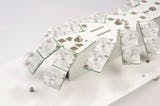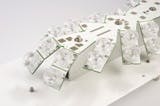With the title of “Lighting Controls: Savings, Solutions, Payback, and Vendor Profiles,” CTA’s report puts a target on SSL savings in the 35-55% range. CTA goes so far as to recommend that companies first adopt a lighting control system when trying to cut energy usage, because control systems carry little of the technology risk associated with new lighting technologies such as SSL. Moreover, CTA expects a control system installed today to be compatible with new SSL technology in the future.
++++++
This article was published in the July/August 2010 issue of LEDs Magazine. To read the full version of this article, please visit our magazine page, where you can download FREE electronic PDF versions of all issues of LEDs Magazine. You can also request a print copy of LEDs Magazine (available by paid subscription) and sign up for our free weekly email newsletter.






